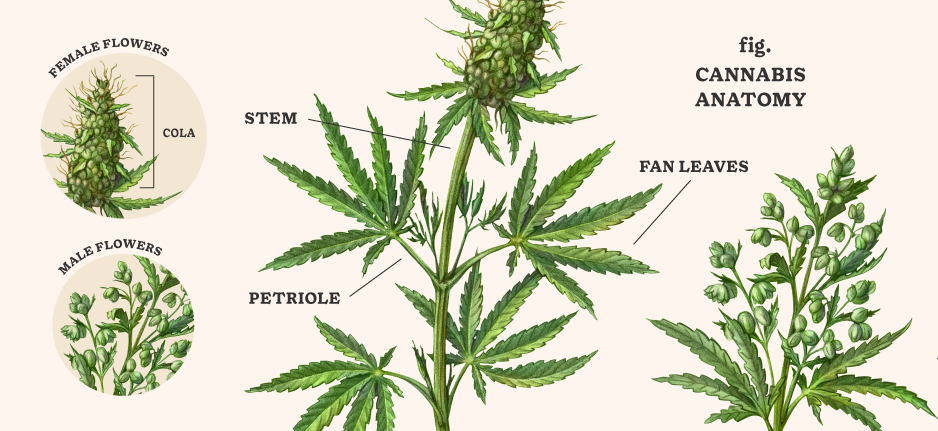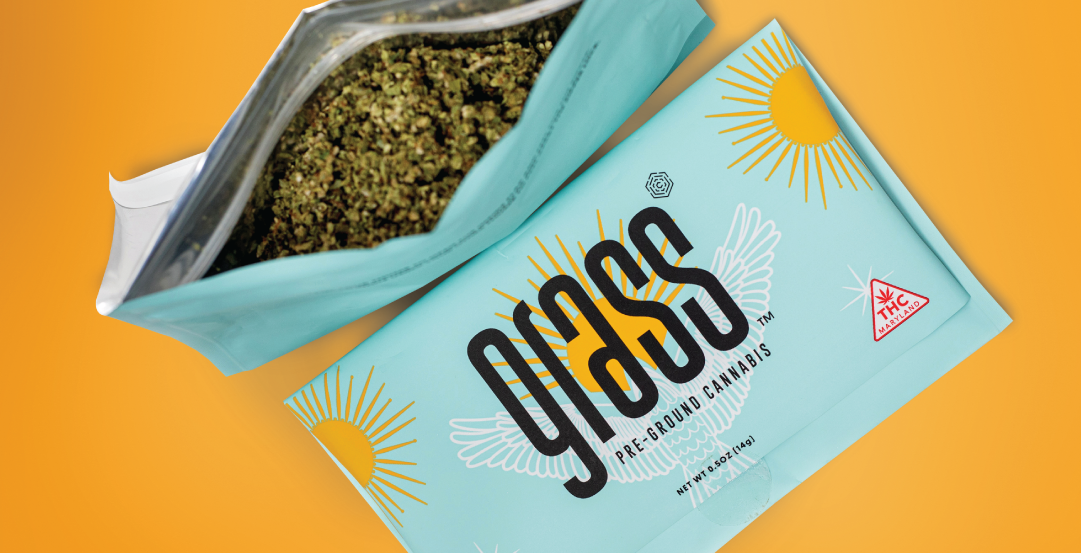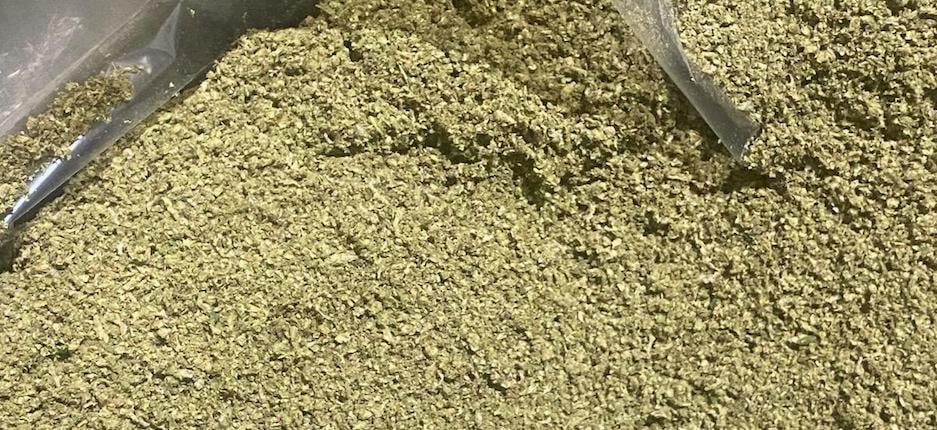Cannabis is like any other plant. It starts as a seed before growing, flowering, and dying. Although some cannabis strains are perennials, most are annuals. (In case it’s been a while since you took a biology course, perennials “come back” and flower 3+ times while annuals flower only once before dying.) While the cannabis plant may be made up of many different parts, the flower is the end-all, be-all of cannabis cultivation. Regardless, we think understanding its individual parts can help our patients have an even deeper appreciation for the plant and, ultimately, its flower.
Flower
Also referred to as “buds,” the flower is, quite literally, the fruit of a cannabis cultivator’s labor. The buds contain cannabinoids and terpenes, both of which interact with the endocannabinoid system to provide the medical patient with health benefits. Flowers only grow on female plants and must be dried before consumption, regardless of how a patient plans on consuming cannabis.
Cola
A cola isn’t necessarily a “part” of the cannabis plant -- it’s the name given to a group of buds that grow closely together. While smaller colas can be found up and down the lower branches, the “main” cola almost always sits at the very top of the plant. The main cola is sometimes called the apical bud.
Bract
The bract houses a female plant’s reproductive parts. They look like tear-shaped “leaves” and are covered in resin glands. These resin glands actually produce more cannabinoids than any other part of the plant! Within the bract, and imperceptible to the naked eye, is the calyx. The calyx is a see-through layer that protects the ovule.
Trichomes
Cannabis plants first developed trichomes as a defense mechanism against predators and the elements, but since they secrete terpenes, they also contribute to how plants taste and smell. They’re small crystal-like bulbs that cover the buds and, in addition to terpenes, they also secrete CBD and THC.
Node
The node is the area at which a branch grows off the main stem (or from another branch.) Some nodes contain buds, but not all of them do. The nodes are used for sexing a cannabis plant, as the beginnings of the male and female sex organs appear at the nodes. As discussed above, determining the sex of a cannabis plant is an essential part of the cultivation process, as only female plants flower.
Sugar leaves
On a cannabis plant, the buds form around resin-coated leaves called sugar leaves. They’re given this name because they’re covered in trichomes that resemble sugar. Sugar leaves are actually saved as “trim” during harvest and are given a second life in pre-rolls, extracts, and other cannabis products.
Fan leaves
When you think about a cannabis plant and its leaves, the iconic leaf you’re thinking of is the fan leaf! Fan leaves capture light so the rest of the plant can grow and thrive, but other than that, they have little use and are often discarded during trimming.
Stem
As with other plants, the stem grows straight up from the root system and supports all of the other branches. Stems are responsible for support and stability. Usually, growers will cut off the stem after about four or five nodes, so the plant grows out instead of up. This way, more bud sites are created, and, ultimately, the plant will produce more flower.
Pistil & Stigma
The pistil contains the reproductive parts of the flower. The tiny hair-like strands that are on the pistil are called stigmas. The purpose of stigmas is to collect pollen from male plants. Stigmas start out white but gradually get darker as the plant matures. Although stigmas have no impact on a flower’s potency or taste they play an essential role in reproduction.
Male vs female cannabis plants
Although female plants are the ones that flower and produce cannabis buds, male plants still serve an important purpose -- they can be used for propagating brand new baby plants from seed. Therefore, it’s important for growers to distinguish male plants from female plants as soon as possible because, with the exception of consciously reproducing plants via pollination (as opposed to cloning a female plant), male and female plants must be separated from each other.
So, how can growers tell a male plant from a female one? It all comes down to what’s hiding between the nodes. At about six weeks old, male cannabis plants develop pollen sacs and female cannabis plants develop pistils.
Like in humans, it is possible for cannabis plants to have both male and female sex organs. These are called hermaphroditic plants, and the formation of both sex organs is often triggered by stress, including bad weather, plant damage, disease, or nutrient deficiencies. Although hermaphrodite cannabis plants can self-pollinate the end result is never very good so hermaphroditic plants are often destroyed.
Tissue culture: A new way to propagate
In April 2021, CULTA began propagating many of our popular plants via tissue culture. Unlike conventional methods, tissue culture is more sustainable and lets cultivators preserve the specimen, almost perpetually, with minimal effort. Over the past 40 years, tissue culture propagation has been used within the agriculture industry, but it’s relatively “new” in cannabis. Learn more about our tissue culture process and its benefits.
At CULTA, we’re constantly looking for ways to innovate and take our genetics to the next level. By culturing and storing all our genetics in a lab we’ll be able to preserve CULTA’s standout strains and can continue to provide our patients with the top-tier cannabis they’re accustomed to.



